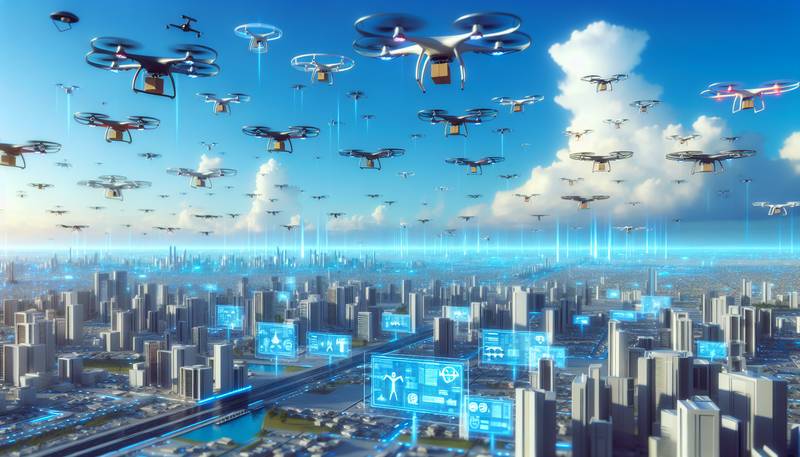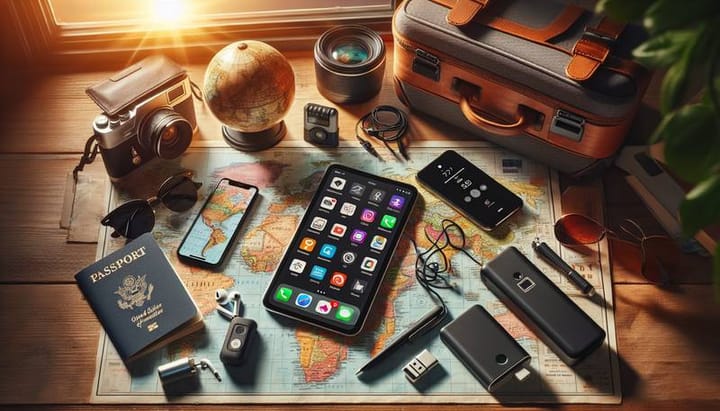The Future of Drones: Uses and Regulations Explored

Introduction
In recent years, the whirl of a drone's propellers has become the soundtrack to technological innovation. These versatile, unmanned aerial vehicles (UAVs) are taking to the skies in increasing numbers, proving invaluable across sectors and transcending their military origins. The potential of drones is virtually limitless, with applications ranging from aerial photography to delivering life-saving medicines. However, this rapid ascent comes with a baggage of concerns about privacy invasion, potential air collisions, and noise pollution. This guide sets out to offer a comprehensive look at the trajectory of drone technology, exploring the frontiers of drone uses and the complex web of regulations that seek to tether their aerial ambitions. Brace yourself for an informative, yet entertaining journey into the world of drones, where the promise of tomorrow's skies is both exhilarating and, at times, daunting.
The Sky's the Limit: Expanding Uses of Drones
Once the preserve of hobbyists and the military, drones are now burgeoning into a multipurpose tool that is reshaping industries. From agriculture, where drones survey fields and monitor crop health, to emergency services, where they probe disaster zones otherwise inaccessible to humans, UAVs are proving their worth as indispensable aids. In media, drones are the new paparazzi, capturing event footage and providing angles that ground-based equipment could only dream of. In the realm of delivery, companies like Amazon are toying with drones to drop parcels on your doorstep, promising to revolutionize e-commerce logistics. Real estate agents employ drones for virtual property walkthroughs, and conservationists use them to track poaching activity. Even healthcare is witnessing drone-led innovation, with UAVs in Rwanda delivering blood and medical supplies to remote areas. The reimagining of drones is happening before our very eyes, and as they become smarter, faster, and more autonomous, the question isn't what drones can do—it's what can't they do.
Regulation Runway: Navigating Drone Laws
With great technology comes great responsibility, and the realm of drones is no exception. As UAVs multiply in our airspace, so too does the need for comprehensive regulation. Lawmakers and aviation bodies worldwide grapple with creating rules to ensure drones and manned aircraft can coexist safely. In the United States, the Federal Aviation Administration (FAA) has been a frontrunner, issuing guidelines that require hobbyist flyers to register drones and mandate commercial operators to pass certification tests. These regulations seek not only to protect people and property but to safeguard privacy from drones that could potentially peek into areas where they're not welcome. Despite these well-intentioned measures, enforcement proves challenging. It's a game of legislative cat-and-mouse, with technology often outpacing the laws meant to rein it in. This section will navigate the intricate lattice of drone regulations, unpacking everything from no-fly zones to altitude restrictions and beyond.
Challenges in the Air: Overcoming Obstacles
Drones, for all their utility, encounter turbulence in the form of technical, regulatory, and social headwinds. Battery life remains a perennial obstacle, with most drones only capable of short flights before needing a recharge. This limitation curtails applications like long-distance transport, making the dream of drone-powered deliveries more complex than companies expected. GPS dependency is another Achilles' heel, leaving drones vulnerable to signal loss or interference. On the regulatory front, privacy concerns mount as drones become more capable of stealthy surveillance. And then there's the public's unease—a drone hovering outside a bedroom window is a modern Peeping Tom, prompting a backlash that could clip drones' wings if manufacturers and legislators don't carefully address these fears. But the drone industry is nothing if not innovative, and solutions—both technical and regulatory—are on the horizon. This section will dive deep into these challenges and showcase the ways in which the drone industry is working to address them and make UAVs a trusted and integral part of our lives.
A Glimpse into the Future: What's Next for Drones
As drone technology advances at lightning speed, the horizon teems with exciting prospects. Imagine fleets of drones, deftly navigating the urban jungle, delivering everything from your morning coffee to vital medical prescriptions. The concept of drone taxis, once the stuff of science fiction, is inching closer to reality, with several companies piloting UAVs large enough to ferry passengers across cityscapes, free from congested roads. Furthermore, in agriculture, drones might soon not only monitor crop health but autonomously tend to fields, sowing seeds and administering nutrients with robotic precision. In conservation, expect drones to become guardians of endangered species and harbingers of biodiversity health data. As artificial intelligence intertwines with drone technology, UAVs will become increasingly autonomous, tasked with making pivotal decisions mid-flight. This section will probe into the potentialities that drones hold and the innovations that are shaping the near and distant future of UAV technology.
Fly Responsibly: Maintaining Drone Etiquette and Safety
As we advance toward a future rich with UAVs, it's critical to emphasize the concept of drone etiquette and safety. Each pilot, whether steering a drone for leisure or commercial purposes, must be a custodian of the skies, ensuring their UAV does not endanger others or infringe upon privacy. With the ever-growing number of drones, the skies are no longer lonely, and collaboration is key to maintaining order and preventing aerial mishaps. This means staying abreast of current regulations, respecting no-fly zones, and obtaining necessary permissions before takeoff. It's imperative that we foster a culture of responsibility among drone enthusiasts and professionals alike, as the actions of a few could have repercussions on the broad freedoms enjoyed by the many. This section will outline the best practices for safe and courteous drone piloting, and appeal to the sense of community necessary to keep our skies friendly and our hobbies and businesses thriving.
Conclusion
In contemplation of the future of drones, it’s clear that we stand on the brink of a new aerial epoch. Drones hold a mirror to humanity’s ingenuity, our relentless pursuit of progress, and the endless possibilities that innovation can unlock. As they weave their way into the fabric of daily life, they bring with them a cocktail of excitement and caution—a duality that defines much of technology's advance. Yet, with every challenge surmounted and every regulation crafted with care, drones are poised to soar beyond our wildest imaginations, reshaping the landscape of numerous industries and touching lives across the globe. The flight path isn’t without turbulence, but by navigating responsibly, respecting our skies, and embracing the changes brought about by these remarkable machines, the future promises to be one where drones are not just seen as tools or toys, but as integral partners in our continuous quest to reach higher, see farther, and accomplish what was once thought impossible. And so, we must fasten our seatbelts and prepare for takeoff into a drone-augmented horizon that, surely, will be nothing short of transformative.


